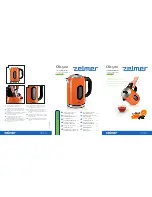
INSTALLATION AND OPERATION MANUAL, DIRECT STEAM TILTING KETTLES,
MODELS: DWT-20, 30, 40, 60, 80, 100
PART NUMBER 10197R2
14
2013-03-06
7.0 TROUBLESHOOTING
AIR VENTING
It is recommended that the “optional” steam trap assembly be installed. This should be
plumbed to the exit end of the kettle. The thermostatic trap is a mechanical device that closes
on high temperature and opens when the temperature drops, allowing the water which formed
from condensate to exhaust but retain the steam under pressure.
The temperatures required for the cooking process to function adequately must be greater than
the boiling point of the liquid food product, that is, water. The greater the steam pressure used,
the higher the temperature and the quicker the cooking process. For example, steam
pressurized at 30 p.s.i. reaches a temperature of 274 degrees Fahrenheit (135 degrees
Celsius). Since air is an unsuitable media through which heat may be transferred, the air
should be exhausted from the jacket by opening the pressure relief valve until the air has been
completely replaced by pressurized steam.
In the initial stages of the cooking process when the steam comes in contact with the cold kettle
bowl surface, it condenses and forms a large amount of water. The condensate water must be
removed from the kettle jacket in order for the kettle to function adequately. The ball valve
located at the base of the kettle jacket may be opened to remove the water. It may be
necessary to repeat this procedure several times depending on the number of batches being
cooked as each batch will create condensate. If the kettle appears to be slow in heating, this
would indicate that there is water in the jacket. Open ball valve and drain. Close valve and
commence operation of kettle.
































